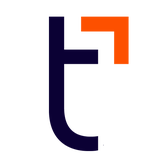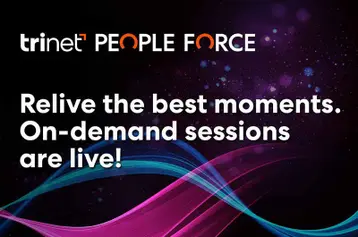PEO Implementation: Enhance HR Efficiency and Growth

Table of contents
- 1.The PEO Model
- 2.Managers and staffers handle HR
- 3.Business uses HR Information System (HRIS)
- 4.Business uses an ASO or HR Consulting
- 5.Business is switching from one PEO to another
- 6.Evaluating Your Business Needs and PEO value
- 7.Cost-effective
- 8.Compliance
- 9.Payroll efficiency
- 10.Access to competitive employee benefits
- 11.Expert best practice guidance
- 12.Growth support
- 13.Choosing the Right PEO
- 14.Industry expertise
- 15.Scalability
- 16.Service offerings
- 17.Adaptable solutions
- 18.Client support
- 19.Reputation
- 20.Planning the Implementation Process
- 21.Benchmarks in the PEO Implementation Process
- 22.Data gathering
- 23.Onboarding process
- 24.Technology integration
- 25.Employee Communication During Implementation
- 26.Monitoring and Optimization
- 27.Common Challenges and How to Overcome Them
- 28.Resistance to change
- 29.Data migration issues
- 30.Unclear expectations
- 31.Get Started Now with TriNet
Many companies outsource HR to a professional employer organization (PEO) to be more cost-efficient, streamline processes, and enhance the workplace for employees. A PEO can simplify your company’s human resources services and boost overall efficiency.
Research indicates that organizations that use a PEO thrive and are more resilient. A 2024 study by the National Association of Professional Employer Organizations reported that small and mid-size businesses using a PEO:
- Have double the growth rate of comparably sized businesses that don't use a PEO.
- Have a 12% lower employee turnover rate.
- Are 50% less likely to go out of business*.
To get the benefits, however, a business must go through a successful PEO implementation, which tends to have many moving parts and can seem overwhelming. Let’s break down the PEO model, how to evaluate your needs, and how to choose and implement the right PEO for your organization.
The PEO Model
When a company works with a PEO, they enter a co-employment arrangement, and the PEO becomes the employer of record for payroll tax purposes. The PEO takes on certain responsibilities outlined in the client service agreement, such as payroll tax administration for payroll processed through the PEO’s platform, workers' compensation administration, and benefits administration on behalf of the client. The company retains full decision-making rights for itself and its workforce.
PEOs enable small and medium-sized businesses to outsource their human resources administration. PEOs typically handle most of the HR function. Some of the most common services are:
- Payroll processing and payroll tax administration
- Benefits administration
- Human resource support
- Risk mitigation solutions
- Performance management
- Best practices guidance to navigate compliance
The way you currently handle your company’s HR processes will impact your PEO implementation. Each of these situations calls for different transition efforts and considerations.
Managers and staffers handle HR
Some organizations, especially small ones, don’t have the budget for an entire HR team. They may hire a single HR employee or have managers of other departments pull double duty for HR tasks.
The person or persons trying to juggle all the HR work will probably be relieved to get help from a PEO. In this scenario, the implementation will benefit by including anyone who has been performing an HR role. They should be aware of what is being administer with the PEO, the timeline for it to occur, and the expectations they should have during and after the change.
Business uses HR Information System (HRIS)
The process will be similar if the current process is managed through an HRIS, human resources information system. The personnel who have been managing the use of the HRIS software will be instrumental in planning for the switch to the PEO's software system. Look for a PEO that gives you functionality over and above what you have now. Set up ample time for training on the new system to keep from hitting snags in adoption.
Business uses an ASO or HR Consulting
If your business manages some administrative tasks in house and others through HR outsourcing, you might face some unique challenges. While the team will be used to outsourcing some HR functions, it may not be comfortable outsourcing other tasks. A thorough review of processes will help you identify any potential gaps or overlaps in services as you determine what you need from a PEO.
Business is switching from one PEO to another
Changing PEOs requires a detailed comparison of features, fee structures, and costs. Leadership will want to get buy-in as early as possible in the process, with the goal of making the transition as smooth as possible. The new PEO should be able to work with you so you can work with the old one to help manage the transition smoothly. The PEO also can help you establish timelines for the transition so you can keep all HR functions running with no downtime.
Evaluating Your Business Needs and PEO value
What workforce solutions will your PEO need to cover? This answer will help you narrow the field of choices and focus on the options that meet your needs and requirements. It will be just as important to consider your future plans. Will you soon need to scale up, hire more employees or offer more competitive compensation packages to better attract top talent? Figure your long-term goals into your decision-making.
Here are some areas (although this list isn’t exhaustive) where a PEO can add value.
Cost-effective
Cost efficiency is on every organization’s mind, no matter how lucrative or large. A PEO can help reduce the time it takes to accomplish tasks, which can save on resources. It can also be more cost-effective than having internal HR staff to handle these functions. In addition, PEOs may have highly experienced professionals available, so companies don’t have to utilized outside expensive consultants.
Compliance
Employment-related rules and requirements are complex and change often. Companies that make mistakes or fail to understand these rules and requirements can be at risk of facing costly non-compliance penalties. PEOs keep abreast of the employment-related rules and requirements and use HR technology to help clients navigate compliance.
Payroll efficiency
Managing payroll in-house can be an enormous, timely burden. PEOs can enhance this process through automation. They can help process payroll faster and with less vulnerability of making mistakes.
Access to competitive employee benefits
PEOs leverage their resources to offer access to competitive benefits offerings. They can provide access to wider options for health benefits and retirement plans (and at a more optimized cost) than a smaller organization could probably negotiate on its own.
Expert best practice guidance
Sometimes, companies need high-level, specific answers to the HR questions that generalists may not know, such as engaging with contractors or a global workforce. PEOs keep expert HR professionals on staff to help handle these scenarios. They can assist with specific employee issues, risk mitigation, business HR strategy, and employee benefits support, to name a few.
Growth support
Scaling is a big part of what it’s all about, right? PEOs can handle fast business growth and rapid hiring. This keeps organizations from being forced to invest in full-time staff to accommodate these milestones.
Choosing the Right PEO
We won’t say it’s easy to choose the PEO that will be the best fit for your organization, but the long-term benefits should make it worth your while. Set a reasonable timeline for a proper evaluation by all the stakeholders. Take time to inventory all your HR requirements and use them to measure your options. Before you sign a client service agreement, you also need to factor in your long-term plans and budget.
To get the most value out of your relationship, factor this short list of elements into your consideration process.
Industry expertise
PEOs that offer hands-on experience working with companies like yours should get a “gold star” during the evaluation process. A PEO that possesses specific knowledge about your industry and the size of your business will be more likely to troubleshoot your company’s unique challenges and give you industry tailored solutions.
Scalability
How can a PEO's workforce management solutions support your organization’s growth? Narrow your choices down to the outsourced providers that have a proven track record. They should be able to point to instances of offering HR support, handling an expanded workforce, and providing resources so you can navigate compliance concerns of companies fast-tracking their growth.
Service offerings
As mentioned above, choose a provider that can give your company EVERY service it needs. If you need compliance support and workplace culture assistance, for example, put questions about these PEO services in your initial assessment.
Adaptable solutions
Some businesses have HR needs that aren’t cookie-cutter. Make sure the PEO you work with can smoothly handle these. Your choice should be able to offer solutions for things like workforce dynamics and compliance that are tied to your company’s size, industry and culture. Question each PEO on its ability to adapt solutions as needed.
Client support
PEOs do some heavy lifting for their clients, like providing compliance best practice guidance and assisting in foundational HR functions. Look for a PEO that also is available to deal quickly with unexpected concerns. Helping you resolve concerns quickly, answering questions thoroughly, and being reachable and responsive helps minimize disruption of your business activities.
Reputation
People talk. You need to listen. Read reviews about the companies you’re looking at. Look for positive remarks about their technology, ease of use, and service support. Once you narrow your list (based on the elements above) ask for client references to help you make the final decision.
Planning the Implementation Process
Once you decide on a PEO, you need to create an implementation plan. Try to strike a balance between providing enough time at every step and moving forward progressively.
Each organization will be different, but here’s an example of a broad timeline that might take around 8 weeks:
Week 1
This week will be heavy on planning.
- Confirm the client service agreement.
- Write down measurable goals and timelines for the process. Be reasonable and specific.
- Create and share the expectations with everyone involved in the implementation.
Weeks 2-3
Move into the implementation preparation.
- Review stakeholder involvement. Decide who will be involved in the implementation and the roles they will play.
- Work on the internal communication message that will inform employees about the transition.
- Leadership helps set the tone by discussing the benefits of the change.
- HR teams prepare to act as the liaison for employees, the company, and the PEO. They will undoubtedly need to field many questions during this time.
Weeks 4-5
Making the initial moves and testing the implementation will fill these 2 weeks.
- Move the data to the PEO platform.
- Integrate the systems so they “talk to each other” efficiently.
- Run tests to make sure every system is connected and performing as expected.
- Troubleshoot any issues, leaning on the PEO's HR support services.
Week 6
Now it’s time to bring employees into the picture with onboarding and training.
- Communicate the new PEO relationship, along with its benefits, to every employee.
- Share new benefits details.
- Hold an onboarding workshop with the PEO to give employees a chance to ask questions.
Week 7
Implementation moves forward.
- Fully transition the planned HR functions to the PEO.
- Closely monitor the process and jump on issues proactively.
- Involve the PEO’s support team to help mitigate problems quickly.
Week 8
The implementation should be complete and function well.
- Work on a cadence of communicating with the PEO to stay aligned with operational goals.
- Collect consistent feedback from HR and employees to catch any issues before they escalate.
Benchmarks in the PEO Implementation Process
During implementation, several steps are crucial to make it successful. If an organization misses the mark on these steps, it could impact the success of project.
Make extra effort to nail the following 3 steps as your PEO gets implemented.
Data gathering
The saying “garbage in, garbage out” applies here. In the beginning, all the data going into the PEO platform must be thoroughly and accurately gathered. The PEO may require information like employee information, pay history, current benefits, and tax details to create a starting point. Inputting outdated or incorrect information can create potential future mistakes that can be costly and cause compliance concerns. Remember that a PEO could help you derive added value from your data by applying HR analytics, providing insight for decisions throughout the business.
Onboarding process
Onboarding mistakes can haunt a company for months. Handing over HR functions to the PEO needs to be closely monitored. Payroll setup and benefits enrollment, for example, are big tasks that offer little room for error. Clear communication with the PEO is vital during these transition points.
Technology integration
A big advantage PEOs typically offer small and medium-sized businesses is more efficient technology platforms. These systems need to be integrated with a company’s other platforms to function like a well-oiled machine. Again, the PEO should work with their new client to make sure the tech piece is working well with the others.
Employee Communication During Implementation
Say it with me: Communication can make or break an implementation. Leaders must keep their employees’ opinions in mind at every stage. The overall goal should be easing the natural fear of change and pointing out the benefits a PEO offers.
- Use transparent messaging. Clearly explain what the PEO will be assisting for the company. Using a mix of messaging (a short presentation in a meeting, emailed explanations, and a webinar with the PEO) typically helps with this part of the process.
- Highlight the benefits. Lay out the benefits each employee will enjoy from the implementation, whether it be access to competitive benefits or professional HR support. Spotlight what’s in it for them.
- Address concerns. Offer resources like email updates, question-and-answer sessions, and scheduled meetings with the PEO representative to handle concerns.
- Encourage engagement. Assure employees that their opinions matter. Encourage them to offer input whenever possible. Employees who feel like they are part of the change are more likely to embrace it.
Monitoring and Optimization
Implementing a PEO is not a simple, get-it-going-and-leave-it-be process. While the time organizations spend on HR functions dramatically decreases after PEO implementation, they still need to oversee aspects of it.
- Ongoing support. PEOs can provide continuous assistance and adjust support as the needs of businesses evolve. Organizations should use this hands-on approach to optimize the PEO's offerings.
- Performance review. Evaluate the return on investment (ROI) and employee satisfaction after implementation. These assessments can identify areas for improvement.
- Continued alignment. Inform the PEO if the organizational needs change or priorities shift. That way, the PEO can adjust to stay aligned with company objectives.
- Scalability adjustments. As the business expands, work with the PEO to scale the services needed to best serve the operational demands.
Common Challenges and How to Overcome Them
Even if you choose the best fit PEO for your organization, obstacles can occur during implementation that might slow the project down. Here are some tips for anticipating them and mitigating their effects.
Resistance to change
Employees may be hesitant to welcome new processes or learn new platforms. They might worry that the changes won’t be beneficial to them. Overcome this issue by transparently explaining the change’s positives as early as you can in the process. Proactively answering questions can decrease their resistance, too.
Data migration issues
Transferring large amounts of data from multiple sources into a PEO can be a complex task. It’s easy to miss segments of data or to make errors. However, organizations can mitigate these issues by working closely with the PEO and doing multiple tests to confirm that everything is synced and no relevant data has been left behind.
Unclear expectations
Uncertainty can make it hard for people to function. Incomplete timelines, missing details, and confusion about who should be doing what may cause stress, confusion, and holdups. Define every participant’s responsibilities in detail at the beginning of the implementation. Monitor progress and adjust as needed once the project gets underway.
Get Started Now with TriNet
Implementing a PEO to outsource HR functions often pays off in several ways for small and medium-sized businesses. PEOs could boost operational efficiency, mitigate risk, enhance employee satisfaction, and help businesses grow. A PEO could be a cost-effective way to access highly skilled HR professionals and technology without adding a full-time department.
Lean on TriNet to be your PEO. Our comprehensive HR services and tech platform can provide your organization with the level of HR support you need. We’ve been in business helping clients just like you for over 30 years. We know how to listen to clients to find out what they need and help them reach their goals.
Schedule a consultation with us today for additional guidance on choosing and implementing a PEO for support to your organization.
This article is for informational purposes only, is not legal, tax or accounting advice, and is not an offer to sell, buy or procure insurance.
This article may contain hyperlinks to websites operated by parties other than TriNet. Such hyperlinks are provided for reference only. TriNet does not control such web sites and is not responsible for their content. Inclusion of such hyperlinks on TriNet.com does not necessarily imply any endorsement of the material on such websites or association with their operators.
*Individual business results may vary, including those of TriNet clients.

TriNet Team
Table of contents
- 1.The PEO Model
- 2.Managers and staffers handle HR
- 3.Business uses HR Information System (HRIS)
- 4.Business uses an ASO or HR Consulting
- 5.Business is switching from one PEO to another
- 6.Evaluating Your Business Needs and PEO value
- 7.Cost-effective
- 8.Compliance
- 9.Payroll efficiency
- 10.Access to competitive employee benefits
- 11.Expert best practice guidance
- 12.Growth support
- 13.Choosing the Right PEO
- 14.Industry expertise
- 15.Scalability
- 16.Service offerings
- 17.Adaptable solutions
- 18.Client support
- 19.Reputation
- 20.Planning the Implementation Process
- 21.Benchmarks in the PEO Implementation Process
- 22.Data gathering
- 23.Onboarding process
- 24.Technology integration
- 25.Employee Communication During Implementation
- 26.Monitoring and Optimization
- 27.Common Challenges and How to Overcome Them
- 28.Resistance to change
- 29.Data migration issues
- 30.Unclear expectations
- 31.Get Started Now with TriNet
.png?format=webp&quality=75&disable=upscale&width=358)




